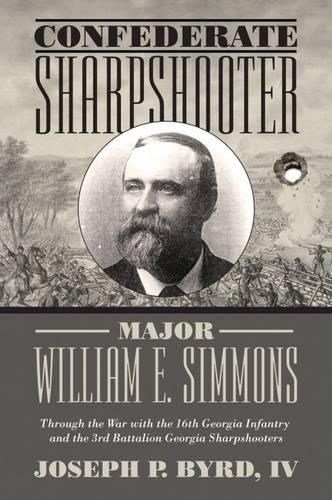Readings Newsletter
Become a Readings Member to make your shopping experience even easier.
Sign in or sign up for free!
You’re not far away from qualifying for FREE standard shipping within Australia
You’ve qualified for FREE standard shipping within Australia
The cart is loading…






This title is printed to order. This book may have been self-published. If so, we cannot guarantee the quality of the content. In the main most books will have gone through the editing process however some may not. We therefore suggest that you be aware of this before ordering this book. If in doubt check either the author or publisher’s details as we are unable to accept any returns unless they are faulty. Please contact us if you have any questions.
In recent years there has been a renewed interest in Civil War sharpshooters. Now there is a new perspective on the subject in the story of Major William E. Simmons (1839-1931), with emphasis on his experiences as an infantry officer in the Army of Northern virginia. Three years after graduating from Emory College, Simmons joined the first company in his home county and received his commission. He was later promoted to Captain in the elite 3rd Battalion Georgia Sharpshooters of Wofford’s Brigade. In 1864, he became acting commander of the brigade’s sharpshooter battalion. The book traces his family heritage and his footsteps from childhood to Emory College, through many challenging war encounters, his capture and imprisonment at Fort Delaware, and a lifetime of service to his state and community that lasted until the 1930s.
A wealth of information from Simmons’ journal and personal papers includes encounters with Generals Nathan Bedford Forrest and George Armstrong Custer. There are also accounts of his miraculous escape from Crampton’s Gap at South Mountain, his regiment’s heroic efforts at the Bloody Lane in the Battle of Sharpsburg, the Sunken road at Fredericksburg, the peach Orchard and Wheat Field at Gettysburg, and his sharpshooters’ key role at Cold Harbor and Wofford’s flank attack at the Wilderness.
To provide more in-depth information on Simmons’ sharpshooter battalion, Byrd provides maps, letters, photographs, and a roster of soldiers compiled from service records and twenty-five other reference sources.
$9.00 standard shipping within Australia
FREE standard shipping within Australia for orders over $100.00
Express & International shipping calculated at checkout
This title is printed to order. This book may have been self-published. If so, we cannot guarantee the quality of the content. In the main most books will have gone through the editing process however some may not. We therefore suggest that you be aware of this before ordering this book. If in doubt check either the author or publisher’s details as we are unable to accept any returns unless they are faulty. Please contact us if you have any questions.
In recent years there has been a renewed interest in Civil War sharpshooters. Now there is a new perspective on the subject in the story of Major William E. Simmons (1839-1931), with emphasis on his experiences as an infantry officer in the Army of Northern virginia. Three years after graduating from Emory College, Simmons joined the first company in his home county and received his commission. He was later promoted to Captain in the elite 3rd Battalion Georgia Sharpshooters of Wofford’s Brigade. In 1864, he became acting commander of the brigade’s sharpshooter battalion. The book traces his family heritage and his footsteps from childhood to Emory College, through many challenging war encounters, his capture and imprisonment at Fort Delaware, and a lifetime of service to his state and community that lasted until the 1930s.
A wealth of information from Simmons’ journal and personal papers includes encounters with Generals Nathan Bedford Forrest and George Armstrong Custer. There are also accounts of his miraculous escape from Crampton’s Gap at South Mountain, his regiment’s heroic efforts at the Bloody Lane in the Battle of Sharpsburg, the Sunken road at Fredericksburg, the peach Orchard and Wheat Field at Gettysburg, and his sharpshooters’ key role at Cold Harbor and Wofford’s flank attack at the Wilderness.
To provide more in-depth information on Simmons’ sharpshooter battalion, Byrd provides maps, letters, photographs, and a roster of soldiers compiled from service records and twenty-five other reference sources.